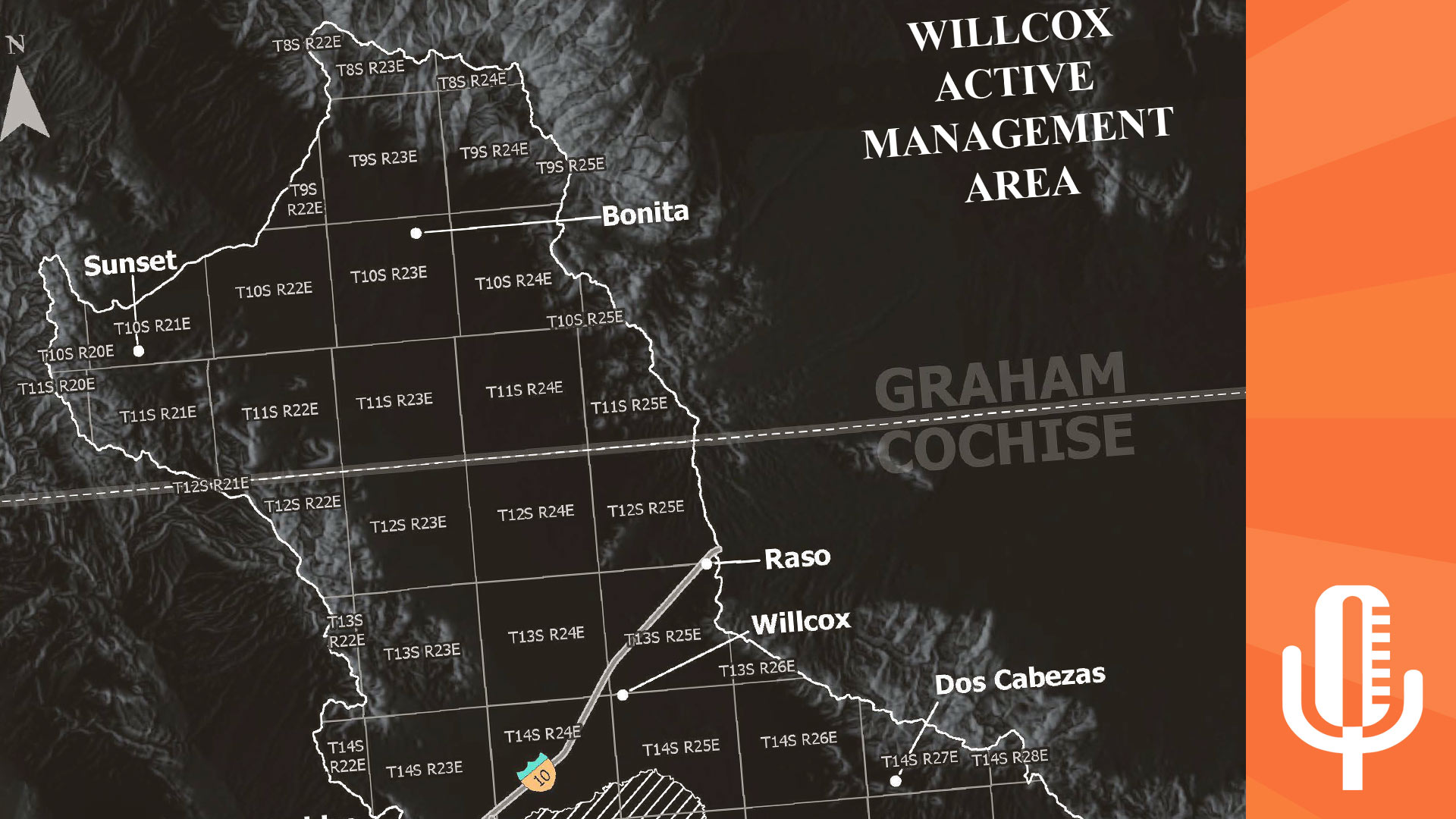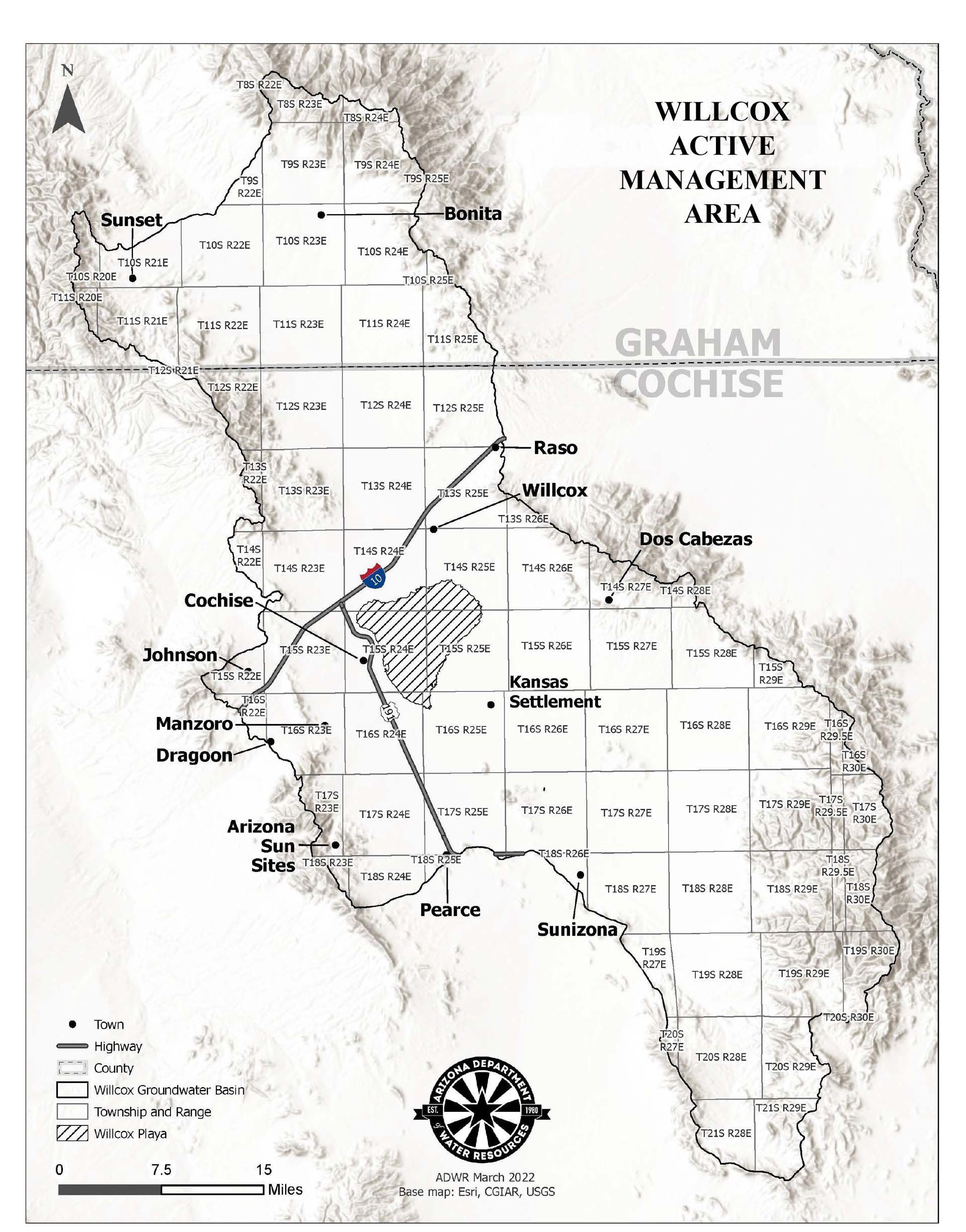 A map of the northern section of the Willcox active management area.
A map of the northern section of the Willcox active management area.
The Buzz for April 11, 2025

Arizona has been going through the complex process of establishing an Active Management Area in the Willcox basin.
The AMA will bring new water regulations to an area where a dropping water table has become a persistent issue.
The Arizona Department of Water Resources took the unusual step of creating the AMA itself last fall after a 2022 vote on the matter failed.
"It's definitely one of those things where you bring it up and there's going to be differences of opinions right away," said Willcox City Manager Caleb Blaschke. "Honestly, a lot of the residents felt like if they were to go back out for vote, they feel that they would have voted one in the second time around, just because from the first time to the second time, when the governor established it, there was a lot of wells going dry, and a lot of changes in people's perceptions."
 VIEW LARGER A map of the Willcox active management area.
VIEW LARGER A map of the Willcox active management area. Among the problems that have arisen since that vote was a time in 2024 that the city came close to running out of water due to pump issues.
"My hotel runs off of the city, well," said Willcox Mayor Greg Hancock, who was not yet in office when the issue happened. "It came down to the wire. I think, five o'clock, if we couldn't get [the pump] up by then, we'd be out of water. And come to find out, we needed to drop our well a little bit, and upgrade some of the electrical on it, so we were able to get some money to do that for the city."
Hancock was among a handful of residents who met with Arizona Governor Katie Hobbs in September 2024, a visit that was documented in AZPM's podcast Tapped.
"When I stepped in, the governor had just put an AMA in place, and then you had both sides trying to come up with legislation," said Hancock, who was elected in November. "And so we've tried to be part of all that to create something so that the city can grow while also our [farming] and vineyards can have a chance to grow a little bit with some of that legislation."
Water issues continue to be a concern for people in the Willcox area, but some are hopeful that it will eventually.
"Right now, the AMA doesn't do anything to curtail water that's being taken out of the basin," said Blaschke. "It just stops the bleed. With the AMA right now, residents definitely have differences of opinions there, and so it's difficult for the city sometimes to represent all those residents, because we have a burgeoning wine industry that supplies 75 to 80% of Arizona's grapes. They're looped in with the AMA, even though they use way less water than most other crops, and they're more water conservative, but now they can expand operations, which is a huge part of our economy."
Among those who are concerned are the people in that burgeoning wine industry.
"One of the problems with the AMA is it really doesn't fix the problem," said Rod Keeling of Keeling Schaefer Vineyards. "The problem is we are at about a five-to-one overdraft, and have been for about 20 years. And the AMA really only does one thing, it stops the expansion of irrigated agriculture over time. Even the department's paperwork shows that their full conservation efforts, it will only reduce the volume in the water that's being used today by less than 0.1% per year."
What concerns them is that the growing grape industry will lose some momentum.
"For right now, I think it puts kind of a question mark and maybe a pause on what our industry is able to do," said Desiree Gerth of Strive Vineyards. "With 80% of Arizona's wine grapes coming out of the Willcox [American Viticulture Area], it's really important before anyone else is able to expand onto their vineyard with the fear that those vines may end up getting ripped out later on, like we've seen happen to some of our neighbors."
She added that the industry goes beyond just the selling of grapes, it also brings in tourism dollars and the added value of those grapes being processed into wine.
That economic impact has another vintner thinking people will eventually pay attention.
"I'm cautiously optimistic. I think when everybody looks at the numbers, what drives the tourism industry, what brings in revenue, and they see what wine does for the area, and not just this area, but all throughout the state, they're going to look at it and say, 'Hey, we cannot be painting with this broad brush'," said Chad Preston of Birds and Barrels Vineyard.
What has Keeling worried is that the AMA could adversely impact the ability to convert agricultural land near Willcox to a crop that could alleviate the water issues while maintaining an economic presence.
"The ironic situation is that really the best solution to the reduction of the aquifer in the Willcox basin is to come up with new crops that don't use as much water. Vineyards are right at the top of that. And not only that, they are the most valuable legal crop in the world. Almost everywhere wine grapes have been proven to be successful and make great wine has been dominated by the wine industry over a period of time. You talk about Northern California, Mendoza in Argentina, those were agricultural areas for other crops before they became vineyard sites. Even in France, of course, you've got to go back several hundred years or maybe more. We have about 50,000 acres of irrigated farmland in this basin right now, if all 50,000 were vineyards, we wouldn't have an overdraft," he said.



By submitting your comments, you hereby give AZPM the right to post your comments and potentially use them in any other form of media operated by this institution.